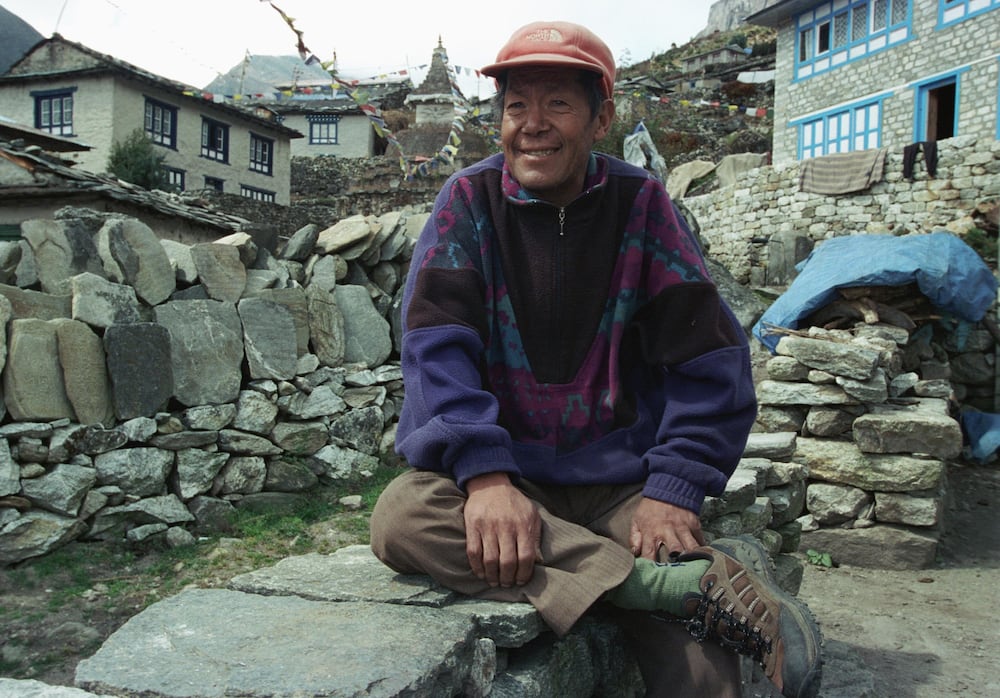The fate of successful members of the Sherpa ethnic group passes through the capital of Nepal, Kathmandu.
There they fix their residence outside the climbing season and their final retirement, leaving behind their valley of residence, the Solokhumbu, seeking the attraction of large cities, their doctors and hospitals, the final idea of progress with which they hardly dared to dream at the end of the last century.
Ang Rita died there last Monday at the age of 72, along with Tenzing Norgay (Edmund Hillary's companion on the first ascent of Everest, in 1953) the most illustrious Sherpa that experts and clueless remember.
His remains were burned two days later in a Buddhist ceremony held at the confluence of the Bagmati and Bishnumati rivers and decorated with national honors ... a gesture from the same Government that was unable to assist him when he suffered a spill in 2017 that affected his quality of life.
The collective imagination continues to confuse the term Sherpa with that of cargo carrier.
The Sherpa ethnic group was established centuries ago in Solokhumbu, coming from Tibet, populating high lands on the slopes of the roof of the planet, Sagarmatha (in Nepalese), Chomolungma (in Tibetan) or Everest for Westerners.
Ang Rita was able to alter the role of her kind in the highest mountains, transforming herself into a guide when only she was expected to be a troupe under a bulky backpack.
Thanks to his example, today Everest Sherpa workers are considered high mountain guides (some have the same international credentials that distinguish Europeans) and earn in the month and a half of the spring almost 10 times more than the average annual salary from the country.
A good worker earns around 5,000 euros on Everest, a third of what a Western guide can earn.
Likewise, the companies that organize expeditions and
trekkings
, set up base camps, equip routes, and coordinate clients' ascents are local: they are no longer just employees but employers.
Ang Rita, of course, had her own company.
Sherpa empowerment grew from the hand of Ang Rita between 1983 and 1996, by force of records, a noun that mountaineers avoid arguing that their activity is less a sport than a way of relating to the natural environment.
But the fact is that Ang Rita completed an unthinkable record of 10 Everest ascents without using artificial oxygen, working, something almost unheard of for anyone lacking a genetics accommodated to hypoxia.
No one has been able to imitate him, no matter how much another Sherpa, Kami Rita, has sneaked to the top 24 times, always pulling artificial oxygen.
She also served as a guide on Cho Oyu, Lhotse, Manaslu, Annapurna, Dhaulagiri and even on the fearsome K2.
Orphaned and poor, the need brought Ang Rita closer to working as a child, tending herds of yaks, carrying loads from one village to another or trading with Tibet until when he was 15 years old he found a place as a porter for an expedition to Dhaulagiri.
His task should have been completed in base camp, but he managed to manage to work above 7,000 meters… without mountain equipment.
“Later, they gave me boots that were bigger and more material, and I knew that I would make the mountain my profession,” he would recall years later.
It was not easy.
The opportunities to sneak into the expeditions to any of the 14 eight-thousandths came by dropper and he often suffered the humiliation of not being able to get past Camp 2. Once again, Dhaulagiri altered his life, accompanying a Swiss team to the top ... twice in just few days.
This opened the doors to Everest, money and prestige.
Ang Rita personally trained her two sons, who ended up following in her footsteps on the mountain.
In 2012, her son Karsang was counting nine peaks on Everest when she passed away on the way to the tenth.
Ang Rita had seen many mountaineers die: he shook off sadness by telling himself that fatality was part of the life of a mountaineer.
His wife could not resign herself and died a year later.
Ang Rita spent her last years caring for her daughter.















